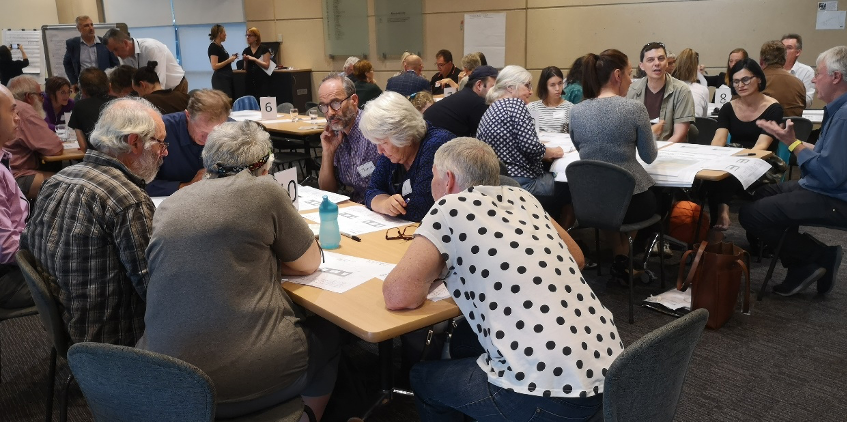How to engage communities in WSC transitions
As cities and towns grapple globally with the challenges of climate change and rapid urbanisation, communities and governments are recognising the importance of water in supporting urban liveability, sustainability and resilience for a city’s long-term prosperity. Many are starting to plan for a water sensitive city (WSC) transition.
But the characteristics of WSC transitions—complex, long-term, and involving technological, cultural, social and institutional changes—mean that top-down processes on their own will be insufficient for driving change. Communities therefore have a critical role in WSC transition planning.
Engaging communities in WSC transitions has five main benefits. This approach:
- contributes local innovation and local knowledge to the design of strategies and actions, making them more responsive to local conditions and community needs
- offers valuable insights into how sustainability innovations can be scaled up and implemented more widely
- generates legitimacy for action— this is particularly important for addressing environmental challenges, which are often contentious and with ambiguous interpretations. Perceptions of fairness and legitimacy have been found to increase broad acceptance of decisions and aid implementation
- can improve the prospect of successful implementation; for example, by providing insight into how stakeholders can foster support for desirable innovations
- can inspire personal and collective responsibility, creating community champions that partner with local authorities to drive and sustain the WSC transition agenda.
It’s clear that WSC transitions require change via local innovation and adaptation. Planning WSC transitions at the local scale means recognising that the needs, values and priorities of citizens in one place may be quite different from those in another, which demands a nuanced and targeted engagement process that elicits a variety of perspectives and localised knowledge. Successful WSC transitions need the community to be engaged as active partners in driving change through their grassroots actions and through lending legitimacy to the actions of industry and government.
So, how do we make it happen?
We’ve just released Principles for engaging communities in water sensitive city transitions, a new resource offering 10 principles to help policymakers and practitioners, especially local and state government, water utilities and catchment management authorities, work with their local communities to plan and implement WSC actions. The resource results from our Integrated Research Project 1 (IRP1), Water sensitive city visions and transition strategies in which we delivered transition planning processes for Perth, Adelaide, Bendigo, Sydney, Townsville and the Gold Coast.
The 10 principles come from critical reflection on the findings from IRP1, as well as transition planning processes in Bendigo and Elwood, which show how key principles were implemented and associated risks were managed.

Here are the 10 principles. We’ve categorised them under three themes: framing, participation, and translation:
Framing
- Establish clear scope – Clearly communicate the scope of the engagement process: who is being asked to participate, what agenda or issue is being influenced, and how the engagement will inform planning.
- Ground discussions in local values – Relate the content and process to a community’s local and historical context to create insights that are relevant and meaningful for participants.
- Focus on the long term – Concentrate on community aspirations for the long-term future to establish a truly transformational and motivational vision.
Participation
- Develop community capacity – Provide opportunities for community participants to learn about the issues and solutions under consideration, and develop their personal and collective capacity to drive change.
- Be inclusive – Attempt to reach out with alternative forms of engagement to parts of the community that may be underrepresented in participatory workshops.
- Foster openness and trust – Foster openness and trust among community participants through effective process design and facilitation.
- Build ownership of the process – Build the community’s sense of ownership of the process and its outputs through longer engagements that create opportunity for iteration and refinement.
- Identify meaningful actions – Arrive at opportunities for tangible and meaningful action that empower the community.
Translation
- Present content in ways that resonate – Use a variety of methods to represent and translate key content in ways that will resonate with a broad community audience.
- Maximise visibility for impact – Strategically promote the process and its outputs to maximise its visibility and impact.
These principles emphasise the benefits of engaging through place, and the importance of diverse perspectives and focusing on long-term transformations. Please download the full resource, Principles for engaging communities in water sensitive city transitions, for more detail and practical examples.